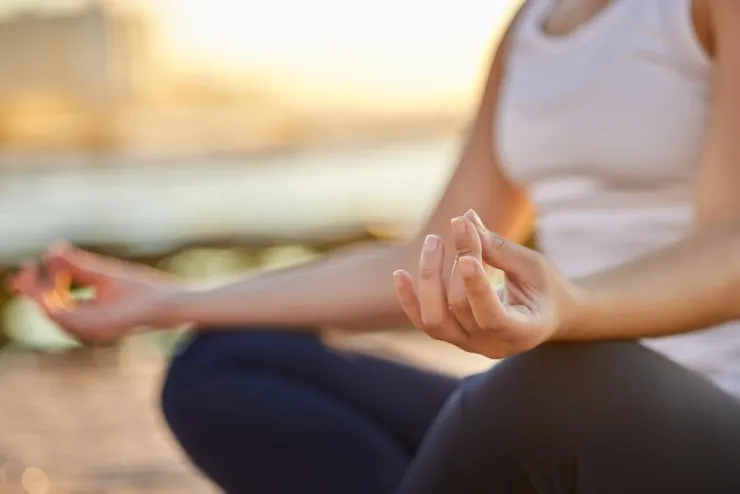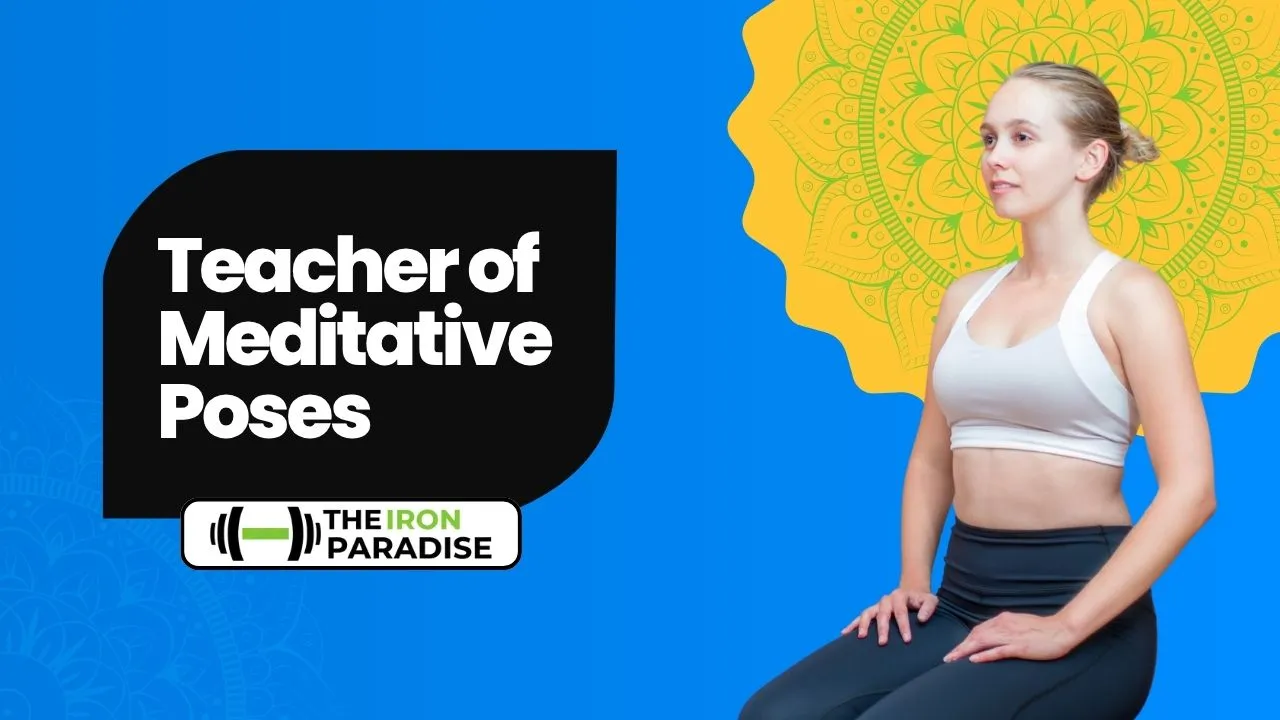
Reflection is the act of centering the brain and creating attention to assist with accomplishing lucidity and quiet. It is broadly perceived for its mind boggling benefits, including diminishing pressure and tension, further developing rest and focus, and expanding in general joy.
There are many styles of contemplation that offer various ways of diverting your concentration and consideration. There's not one generally acknowledged "best" type; it's tied in with finding what works for you. The following are 12 critical sorts of reflection to begin investigating:
12 Types of Meditation and How to Do Them
1. Guided meditation
In directed reflection an educator leads you through the training, either face to face or by means of an application or course. This kind of reflection is ideal for novices, as the educator's master direction can assist you with capitalizing on another experience.
The central thing here is to find an educator you like and interface with. You can likewise tailor your hunt in light of an ideal outcome and attempt directed reflections zeroed in on rest, stress help, or acknowledgment.
2. Mantra meditation
In mantra contemplation you concentrate on a mantra: a word, expression, or syllable. This is a decent methodology for those occasions when the considerations and sentiments appear to be totally overpowering, as it gives your mind another thing to zero in on. It's likewise remembered to expand the vibrations related with the mantra, assisting you with entering a more certain and underground government of being.
Pick a mantra that impacts you. It very well might be a self-certification, (for example, "I'm commendable"), or it could be a straightforward serenade, (for example, "om"). Rehash that mantra again and again for a couple of moments. Each time you get occupied, don't stress over it. Yet again move your concentration back to the mantra.
3. Spiritual meditation
Profound contemplation is the careful act of putting stock in and associating with something more noteworthy, vaster, and more profound than the singular self. In this contemplation you are believing that there is a greater thing out there and that everything occurs which is as it should be.
Sit peacefully with the mindfulness on the breath and rehash certifications zeroed in on give up and trust, for example, "I'm cognizant and mindful," "I let everything just be all things considered at this time," or "I live in my Maker and my Maker lives in me."
In directed reflection an educator leads you through the training, either face to face or by means of an application or course. This kind of contemplation is ideally suited for novices, as the educator's master direction can assist you with benefiting from another experience.
4. Mantra meditation
In mantra reflection you concentrate on a mantra: a word, expression, or syllable. This is a decent methodology for those occasions when the considerations and sentiments appear to be totally overpowering, as it gives your mind another thing to zero in on. It's likewise remembered to expand the vibrations related with the mantra, assisting you with entering a more certain and covert government of being.
5. Spiritual meditation
Profound reflection is the careful act of having confidence in and associating with something more noteworthy, vaster, and more profound than the singular self. In this contemplation you are believing that there is a greater thing out there and that everything occurs which is as it should be.
Sit peacefully with the mindfulness on the breath and rehash attestations zeroed in on give up and trust, for example, "I'm cognizant and mindful," "I let everything just be for all intents and purposes at this time," or "I live in my Maker and my Maker lives in me."
Track down a certified Supernatural Reflection instructor to start you into the contemplation procedure with a mantra. This mantra is chosen by a mind boggling set of variables, including the year the specialist was conceived, and the year the educator was prepared. Sit two times every day for 20 minutes rehashing this mantra.
6. Vipassana meditation
This reflection strategy, likewise called "Understanding Contemplation," includes sitting peacefully, zeroing in on the breath and taking note of all physical or mental vibes that emerge. The thought is to find "knowledge" into the real essence of the real world (which vipassana instructs is enduring), by analyzing all parts of your reality. Multiday vipassana withdraws are a famous method for jumping further into this training.
Sit discreetly and focus on the breath as it travels through the body. Let all feelings, sensations, contemplations, and sounds emerge without getting joined to them. Mark any interruption, for instance, "a bird tweeting" and return your concentration to the breath.
7. Metta meditation
Otherwise called a "cherishing thoughtfulness" reflection, in this training you get your attention to individuals your life (both all over, known and obscure, preferred or loathed) and direct certain energy and considerations toward them. It's a great method for diminishing outrage and expanding grasping, inspiration, and sympathy.
Track down an agreeable position, and with the eyes shut, carry your attention to the chest, to the heart place. As you take in, envision you are taking in warmth, empathy, and genuine love for yourself, and as you inhale out, envision you are coordinating that glow, sympathy, and unqualified love to individuals around you. Begin with dear companions or family members, and move out to guiding it to impartial colleagues and afterward those you could do without the present moment.
8. Chakra meditation
This reflection is utilized to keep the body's seven chakras, or energy focuses, open, adjusted, and liquid. In light of the thought hindered or unequal chakras can cause negative physical or mental illnesses and that by mulling over them we can bring oneself back into congruity.
9. Yoga meditation
Similarly as there are a wide range of sorts of reflection, there are many styles of yoga. A few kinds, like Kundalini, center around utilizing thoughtful strategies to reinforce and loosen up the sensory system. You can carry a reflective attention to any yoga style or class just by zeroing in on the breath and the present.
While taking any yoga act, keep your mindfulness on the breath and the actual sensations right now. Yet again each time you find the psyche meandering to contemplations, tenderly step it back. Carcass present (savasana) taken toward the finish of all yoga classes, is one of the most amazing pathways for reflection.
10. Candle-gazing meditation
Trataka, or light looking, is a sort of reflection where you keep your eyes open and zeroed in on a point or item — habitually, the fire of a lit candle. Articles, for example, gems could likewise be utilized. This training carries energy to the third-eye chakra and can increment focus.
11. Visualization meditation
In a perception contemplation, you picture a person or thing to you, to the prohibition of all the other things. It can feel testing however is the same truly than zeroing in on the breath or body. Successive perception can assist you with showing the things you need throughout everyday life, by remaining on track and emptying energy into them.
12. Become the observer meditation
Like vipassana, in this reflection you bring your mindfulness totally yet unbiasedly to oneself and notice your contemplations, sentiments, examples, and ways of behaving. Through this concentration, you will start to advance more about yourself and from that mindfulness have the option to impact any change you might need or need to find in your life.
Whichever contemplation style you pick, doing it consistently will prompt the best outcomes. Attempt a method consistently for 10 days and perceive how you feel toward the end. What's more, recall: You can't think wrong, worry don't as well on the off chance that the brain is occupied. This is extremely typical. Reflection isn't tied in with compelling the psyche into tranquility yet rather diverting the concentration and consideration to offer yourself a little reprieve.
FAQs
What are the 5 types of meditation?
Five of the most well-known sorts of reflection are care, body filter, strolling, adoring graciousness, and supernatural contemplation.
What are the 3 sorts of reflection in Buddhism?
To figure out how to concentrate plainly, we should pick a request or a reflection practice and follow this way with responsibility and steadiness..." Knowledge Contemplation underlines three fundamental sorts of reflection: care, lovingkindness, and fixation. Every one of these sorts incorporates a wide range of styles of training.
What are the 4 types of meditation in Buddhism?
From this combination, the old educators of the Theravada custom have chosen four reflection subjects, and gathered them into a set known as "the four defensive reflections": memory of the Buddha, the contemplation on lovingkindness, examination of the idea of the body, and care of death.




